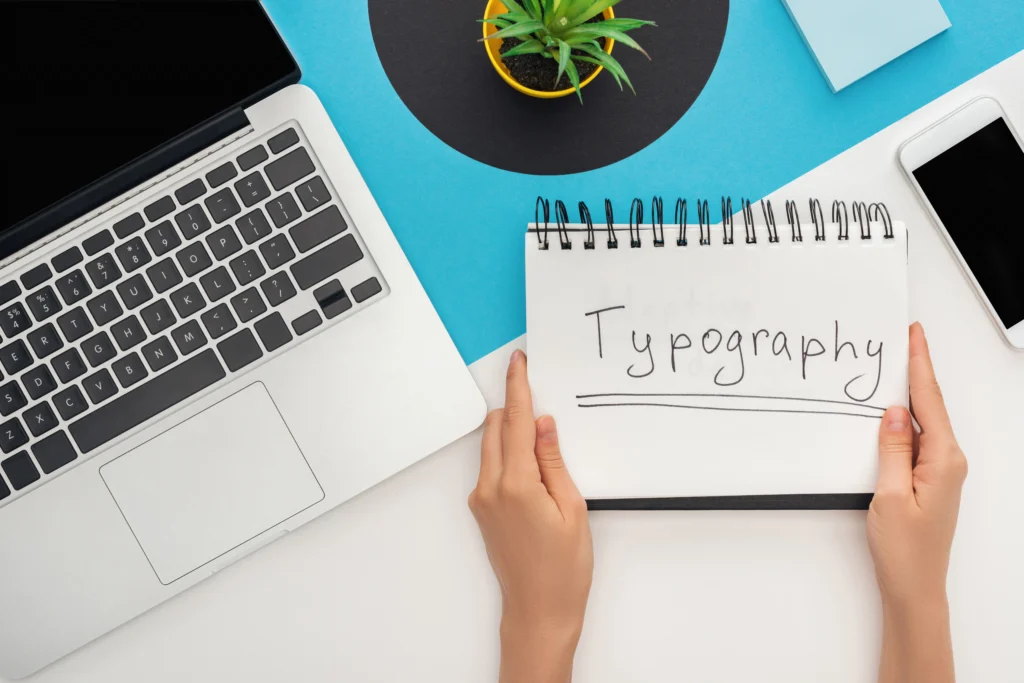
The evolution of typography has played a vital role in shaping visual communication, design, and the way we perceive written language today. From ancient manuscripts to digital fonts, typography has experienced countless transformations. This article will take you on a journey through the history of modern typography development, exploring its key milestones, influential designers, and the impact it has had on contemporary design. By understanding this history, we can appreciate the evolution of typography and its influence on modern aesthetics and branding.
The history of modern typography begins with Johannes Gutenberg, who revolutionized the world of print with his invention of movable type in the mid-15th century. Prior to Gutenberg’s printing press, books were laboriously copied by hand, limiting accessibility to written works. Gutenberg’s innovation not only democratized the production of books but also established the foundation for typography as we know it today.
The first typefaces created during this time were based on the Gothic script, which was commonly used in handwritten manuscripts. However, the development of typography began to take shape as typographers experimented with new styles, including the more readable Roman and Italic typefaces that emerged in the late 15th and early 16th centuries.
The Roman typeface, created by Nicolas Jenson in 1470, became the dominant style in Europe due to its legibility and elegant proportions. Italic type, introduced by Aldus Manutius in 1501, offered a more compact and slanted design, making it ideal for smaller text or emphasis within a block of Roman text. These two styles would go on to form the foundation of modern serif fonts, which are still widely used today.
The Industrial Revolution, which began in the late 18th century, brought significant changes to typography. The rise of mass production and the demand for printed materials led to the creation of new typefaces designed for large-scale printing. One of the most important developments during this period was the introduction of the sans-serif typeface.
Sans-serif fonts, which lack the small decorative strokes (serifs) at the ends of letterforms, emerged in the early 19th century. These fonts were initially met with resistance by traditionalists who favored serif typefaces, but they quickly gained popularity due to their clean, modern appearance. The first widely recognized sans-serif typeface was created by William Caslon IV in 1816.
The simplicity and readability of sans-serif fonts made them ideal for advertising and signage during the industrial era. This marked the beginning of a shift towards more functional, minimalist typography that would dominate the 20th century.
The early 20th century saw the rise of modernism, a movement that rejected ornate and decorative design in favor of simplicity, functionality, and clarity. This movement had a profound impact on typography, as designers sought to create typefaces that embodied these principles.
One of the most influential figures in modernist typography was Jan Tschichold, a German typographer who advocated for the use of sans-serif fonts and asymmetrical layouts. His book “The New Typography,” published in 1928, outlined the principles of modernist design and became a seminal work in the field of graphic design.
Two of the most iconic typefaces to emerge from the modernist movement are Helvetica and Futura. Helvetica, designed by Max Miedinger and Eduard Hoffmann in 1957, is known for its neutral and versatile design. It became the go-to font for corporate branding, signage, and transportation systems due to its legibility and clean appearance.
Futura, designed by Paul Renner in 1927, is another key modernist typeface. Its geometric shapes and balanced proportions made it a favorite among designers who embraced the modernist philosophy of simplicity and order. Futura was widely used in advertising, book design, and even space exploration, as it was the typeface chosen for the plaque left on the moon by the Apollo 11 mission.
The advent of digital technology in the late 20th century revolutionized the world of typography once again. With the introduction of desktop publishing software, designers gained unprecedented control over type, allowing for greater experimentation and creativity. This period saw the rise of new typefaces, as well as the revival of classic fonts that had been digitized for modern use.
The digital revolution also led to the development of web fonts, which made it possible for designers to use a wider variety of typefaces in online content. This expanded the possibilities of typography in web design and allowed for more cohesive branding across digital platforms.
Some of the most notable digital fonts include Arial, which was designed as a modern alternative to Helvetica, and Verdana, a font specifically designed for digital screens by Matthew Carter in 1996.
Today, typography continues to evolve, with designers constantly pushing the boundaries of what is possible. Minimalist and experimental fonts have become increasingly popular, reflecting a broader trend towards simplicity and innovation in design.
Minimalist fonts, such as Proxima Nova and Avenir, emphasize clarity and functionality. These fonts are often used in modern branding and web design, where a clean, simple aesthetic is desired. Their legibility and versatility make them ideal for conveying information in a straightforward manner.
At the other end of the spectrum, experimental fonts challenge traditional conventions of typography. These typefaces often feature unusual shapes, distortions, or abstract designs, and are used to create bold, eye-catching statements. Examples of experimental typography can be found in fashion magazines, album covers, and contemporary art installations.
The history of modern typography development is a testament to the power of design to shape culture and communication. From Gutenberg’s printing press to the digital fonts of today, typography has continuously evolved, reflecting changes in technology, aesthetics, and societal values. Whether it’s the clean lines of Helvetica or the bold experimentation of contemporary fonts, typography remains a vital element of visual communication.
As we move forward, the future of typography will likely continue to balance between functionality and creativity. By understanding the rich history of typography, designers can draw inspiration from the past while continuing to innovate and push the boundaries of what is possible in the world of type.